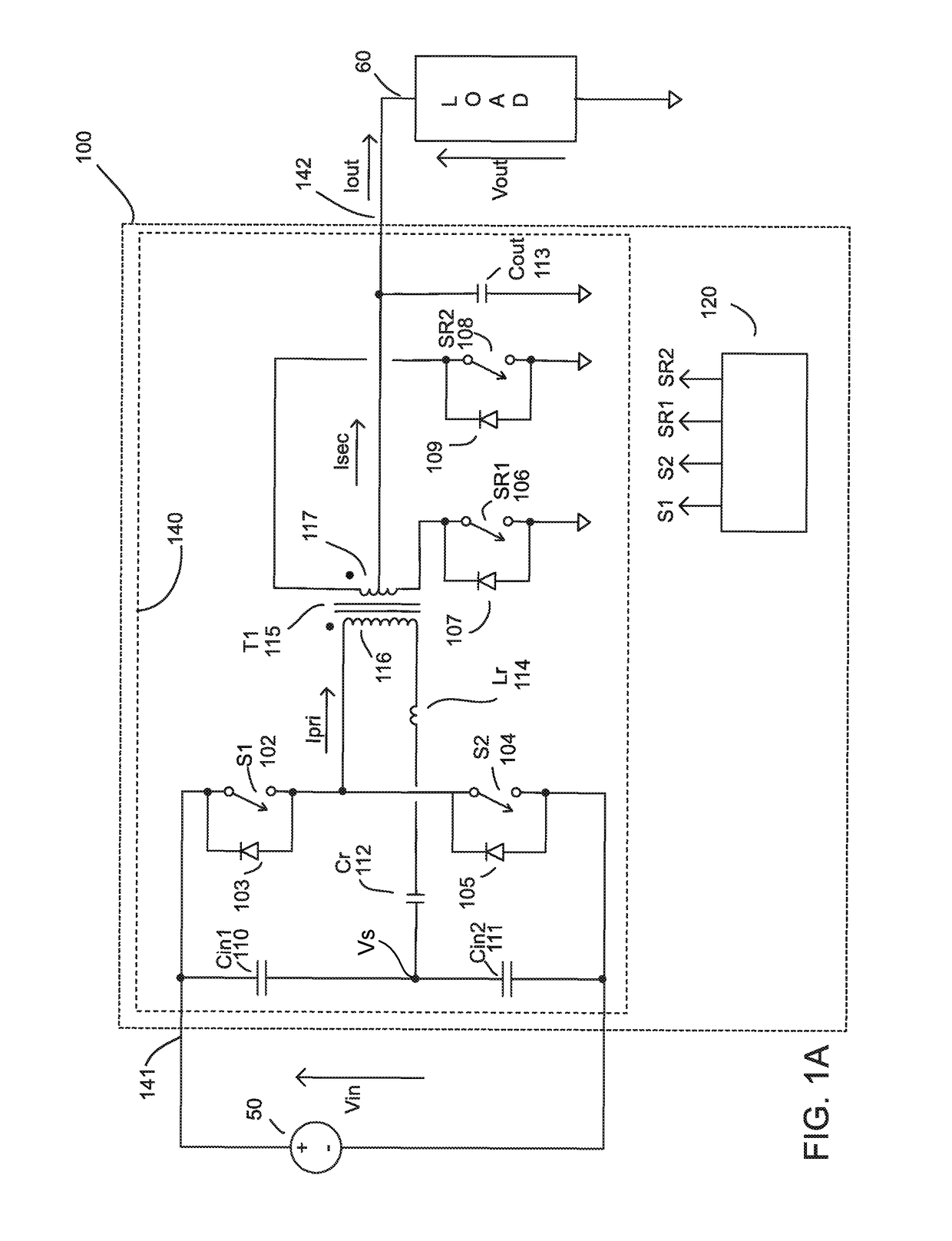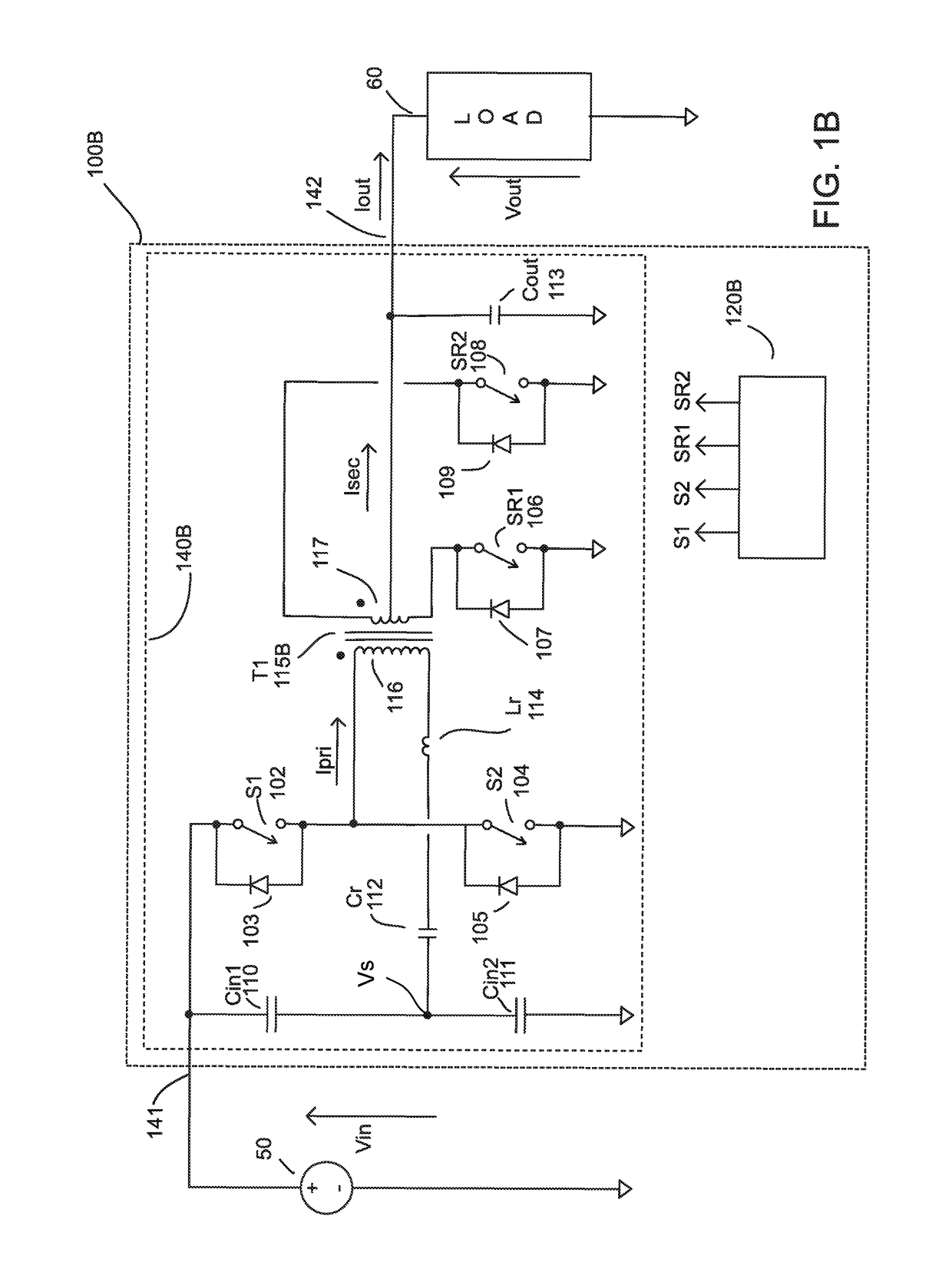Adaptive control of resonant power converters
a technology of resonant power converter and adaptive control, which is applied in the direction of electric variable regulation, process and machine control, instruments, etc., can solve the problems of “switching loss and switching loss, and achieve the effect of low impedan
- Summary
- Abstract
- Description
- Claims
- Application Information
AI Technical Summary
Benefits of technology
Problems solved by technology
Method used
Image
Examples
Embodiment Construction
[0022]A DC transformer as defined herein delivers a DC output voltage, Vout, which is a fixed fraction of the voltage, Vin, delivered to its input and optionally provides isolation between its input and its output. The voltage transformation ratio or voltage gain of the DC transformer (defined herein as the ratio, K=Vout / Vin, of its output voltage to its input voltage at a load current) is fixed by design, e.g. by the converter topology, its timing architecture, and the turns ratio of the transformer included within it. A category of DC transformer topologies, called Sine Amplitude Converters (“SACs”), are described in Vinciarelli, Factorized Power Architecture with Point of Load Sine Amplitude Converters, U.S. Pat. No. 6,930,893 issued Aug. 16, 2005; and in Vinciarelli, Point of Load Sine Amplitude Converters and Methods, U.S. Pat. No. 7,145,786 issued on Dec. 5, 2006, each assigned to VLT, Inc. and incorporated herein by reference in their entirety (the “SAC patents”). As disclose...
PUM
 Login to View More
Login to View More Abstract
Description
Claims
Application Information
 Login to View More
Login to View More - R&D
- Intellectual Property
- Life Sciences
- Materials
- Tech Scout
- Unparalleled Data Quality
- Higher Quality Content
- 60% Fewer Hallucinations
Browse by: Latest US Patents, China's latest patents, Technical Efficacy Thesaurus, Application Domain, Technology Topic, Popular Technical Reports.
© 2025 PatSnap. All rights reserved.Legal|Privacy policy|Modern Slavery Act Transparency Statement|Sitemap|About US| Contact US: help@patsnap.com



